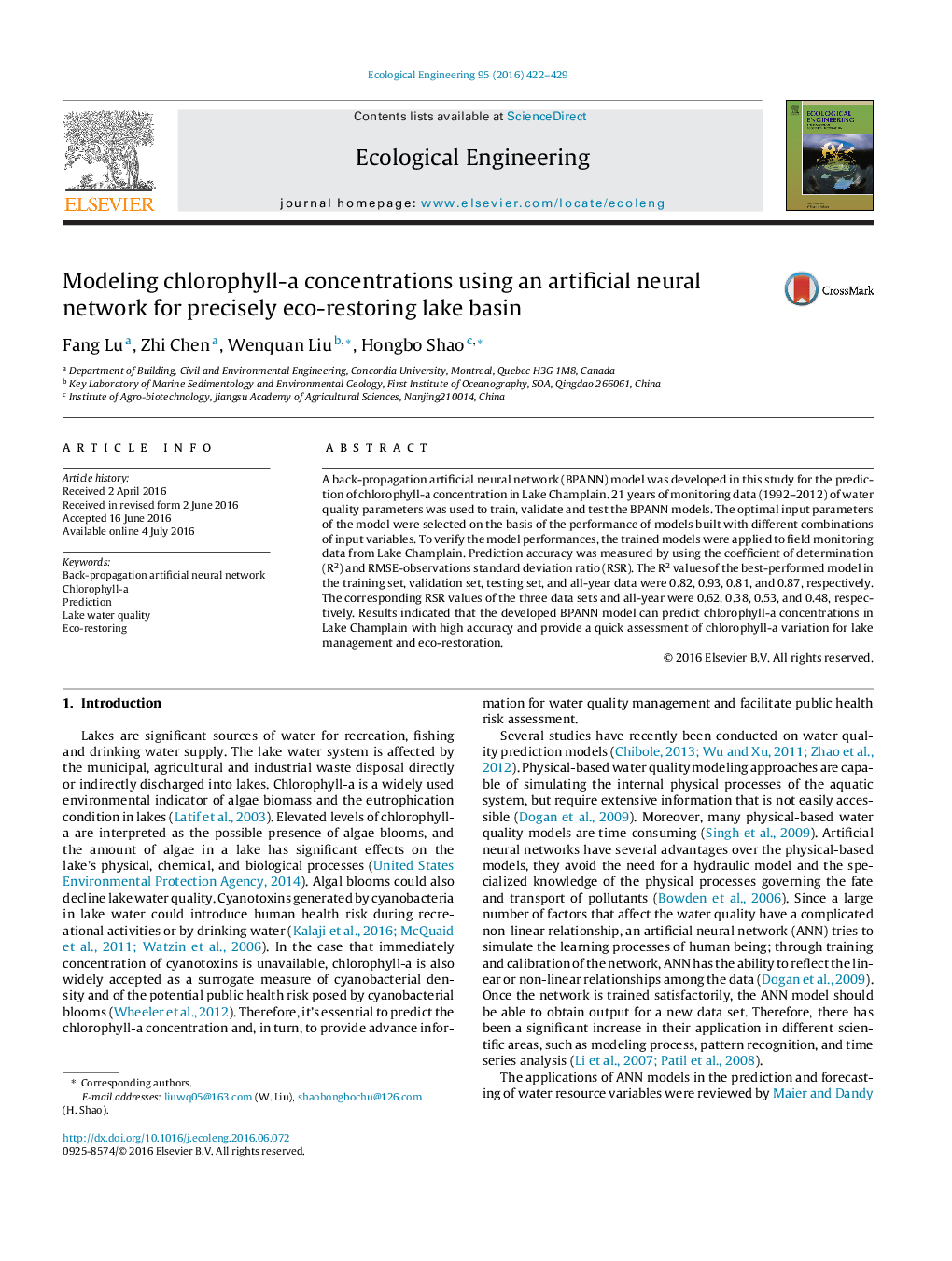| Article ID | Journal | Published Year | Pages | File Type |
|---|---|---|---|---|
| 4388467 | Ecological Engineering | 2016 | 8 Pages |
A back-propagation artificial neural network (BPANN) model was developed in this study for the prediction of chlorophyll-a concentration in Lake Champlain. 21 years of monitoring data (1992–2012) of water quality parameters was used to train, validate and test the BPANN models. The optimal input parameters of the model were selected on the basis of the performance of models built with different combinations of input variables. To verify the model performances, the trained models were applied to field monitoring data from Lake Champlain. Prediction accuracy was measured by using the coefficient of determination (R2) and RMSE-observations standard deviation ratio (RSR). The R2 values of the best-performed model in the training set, validation set, testing set, and all-year data were 0.82, 0.93, 0.81, and 0.87, respectively. The corresponding RSR values of the three data sets and all-year were 0.62, 0.38, 0.53, and 0.48, respectively. Results indicated that the developed BPANN model can predict chlorophyll-a concentrations in Lake Champlain with high accuracy and provide a quick assessment of chlorophyll-a variation for lake management and eco-restoration.
